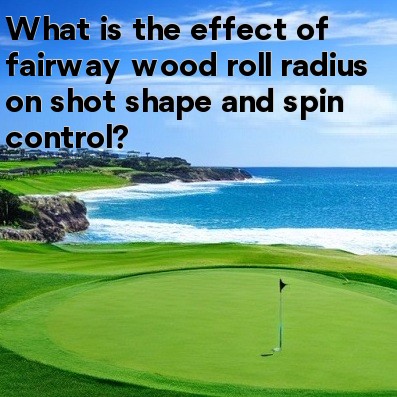
Effect of Fairway Wood Roll Radius on Shot Shape and Spin Control
When it comes to golf, the choice of equipment can have a significant impact on various aspects of your game, including shot shape and spin control. One piece of equipment that plays a crucial role in this regard is the fairway wood. The roll radius of a fairway wood is a factor that golfers should consider when selecting the right club for their game.
A fairway wood's roll radius refers to the curvature of the sole of the clubhead. It influences how the club interacts with the ground during impact, affecting shot shape and spin control. Let's delve into the effects of the fairway wood roll radius in more detail.
- Shot Shape: The roll radius of a fairway wood influences shot shape by affecting the club's interaction with the turf. A smaller roll radius, or a flatter sole, tends to be more forgiving and easier to hit off tight lies or thin grass. With a flatter sole, the club slides through the turf, resulting in a lower trajectory and a more penetrating ball flight. This can be beneficial when trying to control shots in windy conditions or when you need to maximize distance with a lower trajectory.
- Spin Control: The roll radius also affects spin control. A larger roll radius, or a more rounded sole, tends to dig into the turf more, creating more friction and generating more spin on the ball. This can be beneficial when trying to hit shots that need to stop quickly on the green or when you want to hit high, soft-landing shots that hold their position. The increased spin can also help golfers who tend to fade or slice the ball, as it helps to promote a more controlled ball flight.
It is important to note that the fairway wood roll radius is not the only factor that influences shot shape and spin control. Other factors, such as the angle of attack, swing path, and clubface position at impact, also play significant roles in determining the outcome of a shot. However, the roll radius can complement these factors and enhance the desired shot shape and spin control.
Ultimately, the choice of fairway wood roll radius should be based on an individual golfer's playing style, skill level, and course conditions. Golfers who prefer a more versatile club that can perform well on various lies and produce a penetrating ball flight may opt for a smaller roll radius. On the other hand, golfers looking for increased spin control and the ability to work the ball may prefer a larger roll radius.
In conclusion, the fairway wood roll radius has a significant impact on shot shape and spin control in golf. Understanding how it affects the club's interaction with the turf allows golfers to make informed decisions when selecting the right club for their game. By choosing a fairway wood with the appropriate roll radius, golfers can optimize their shot shape and spin control, ultimately improving their overall performance on the golf course.





